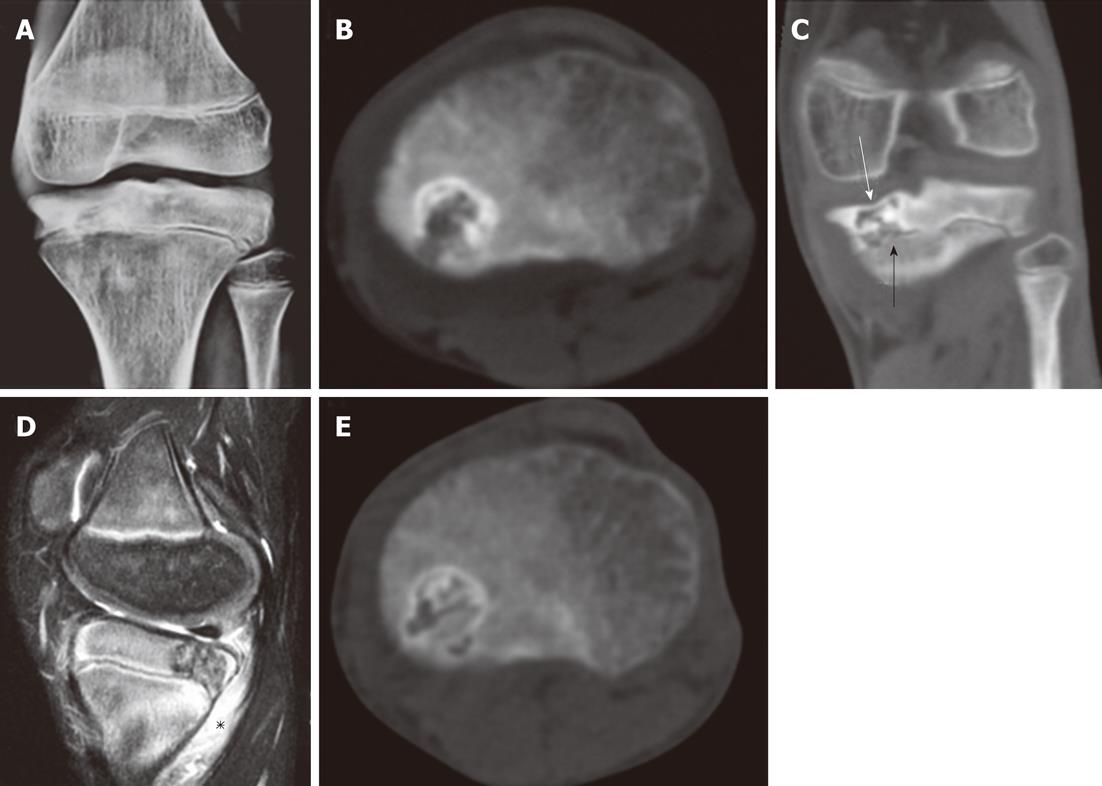Copyright
©2012 Baishideng Publishing Group Co.
World J Radiol. Jul 28, 2012; 4(7): 335-340
Published online Jul 28, 2012. doi: 10.4329/wjr.v4.i7.335
Published online Jul 28, 2012. doi: 10.4329/wjr.v4.i7.335
Figure 1 Chondroblastoma of the left tibia in a 14-year-old male.
A, B: Plain radiograph and non-contrast computed tomography (NCCT) axial image show a geographic lytic lesion with sclerotic margins and foci of matrix calcification in the medial tibial epiphysis; C: NCCT coronal image shows thinning of the subchondral bone superiorly (white arrow) and extension of the lesion to thephyseal plate inferiorly (black arrow) which is non-fused; D: Sagittal short-tau inversion-recovery magnetic resonance (MR) image showing heterogeneous signal intensity of the lesion with surrounding bone marrow and soft tissue oedema (asterisk); E: Follow-up CT image after 6 mo showing increased mineralization of the matrix with no appreciable change in lesion size.
- Citation: Rajalakshmi P, Srivastava DN, Rastogi S, Julka PK, Bhatnagar S, Gamanagatti S. Bipolar radiofrequency ablation of tibialchondroblastomas: A report of three cases. World J Radiol 2012; 4(7): 335-340
- URL: https://www.wjgnet.com/1949-8470/full/v4/i7/335.htm
- DOI: https://dx.doi.org/10.4329/wjr.v4.i7.335









